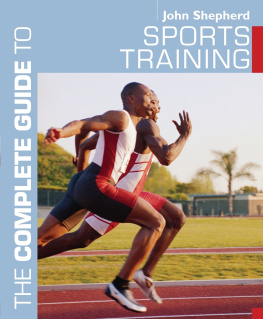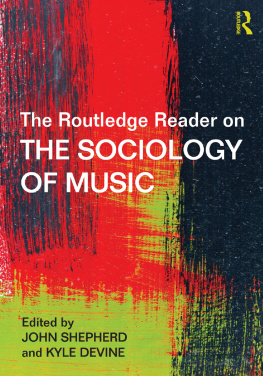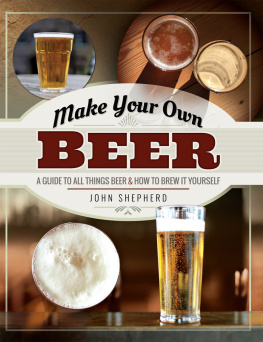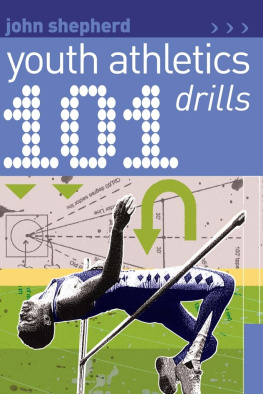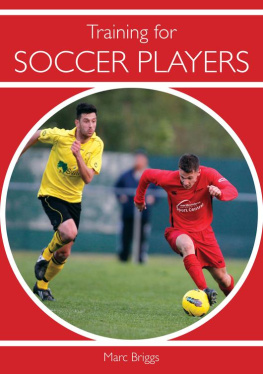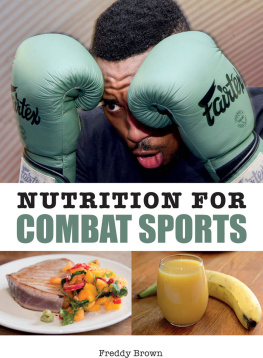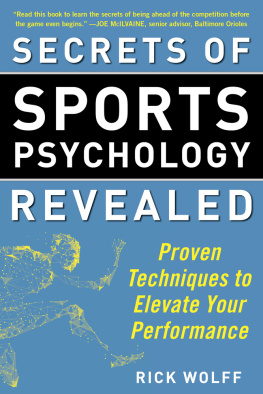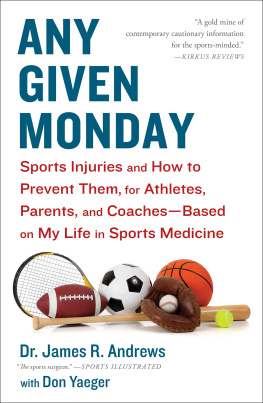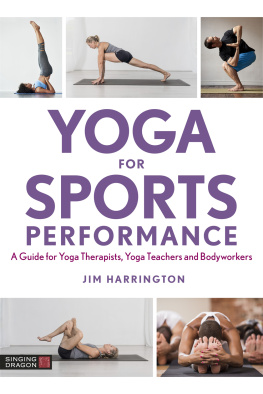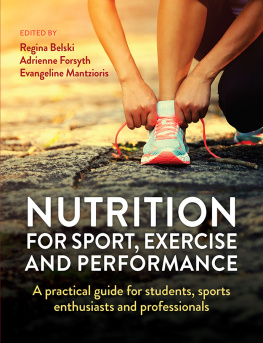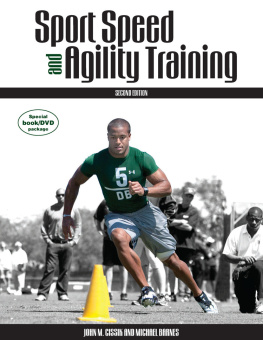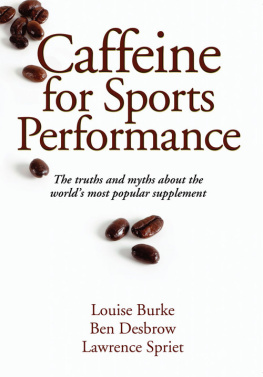
This book is dedicated to my wife.

Recently, there has been an explosion in the availability of sports science; the web has obviously been highly instrumental in this. Unfortunately, as anyone who has read a learned physical education/sports science journal, review or text will know, theres often a great deal of jargon and concepts can be difficult to understand. Coach and athlete want to know how to apply this knowledge quickly and practically; what training will make them quicker, stronger, more powerful, more agile, more enduring and so on? In writing this book I set out to do just that. I wanted to unravel the sports science mysteries and provide athlete and coach with a practical understanding of sports science and training theory, so that they can produce personal bests and winning performances.
Sports training is all about making the right conditioning (training) choices for a particular sport and marrying them to the specific needs of the athlete and/or team. Believe it or not, in most cases the recipients cannot fail to win (or at least optimise their performance) when this marriage is achieved.
The Complete Guide to Sports Training takes you from understanding the basic structure, movement and energy creation possibilities of the body, through to specific developmental parts, such as, Developing Power, Developing Endurance and Developing Speed and Agility. These parts explain and, crucially, exemplify how the body can be optimally conditioned to achieve specific sports performance goals. Supporting parts consider nutrition and supplementation, coaching and mental training.
As an international athlete, sports science graduate, coach to international athletes and longtime sports, fitness and health writer, I have been fortunate to come into contact with, train with, work with and interview some of the most knowledgeable brains in sport. I have assimilated as much of this knowledge as possible into this book; and to reiterate, I have tried to make it as accessible and practical as possible. To achieve this youll find sample training programmes, sports training tips, boxes, panels and numerous photographs throughout, all designed to make the learning process simpler.
I have also included comment from top athletes and coaches, ranging from Olympic champions Seb Coe, Jason Gardener and Cathy Freeman to Rugby World Cup winner Josh Lewsey, all of whom I have been fortunate enough to interview and on occasions train with. After all, there is no more justification for a sports training ingredient, or way of doing, than seeing it manifest itself in elite-level winning performances. Read on, and you too could be achieving your very own world-beating and personal best-beating performance, or engendering one in those you coach.
John Shepherd


As an athlete in my younger days I was often told to do such and such a workout with no rationale really being offered as to why it would benefit me. No mention, for example, was made of the muscular action involved, or even the specific muscles used in an exercise. Energy pathways meant little, if nothing, to me. As a result, I believe it is crucial for coach and athlete to understand the effect a particular workout has on the body. Knowing this will make the purpose of the workout clear and all the more likely to succeed. In this part I provide information on how the body works and, crucially, how it adapts to sports training. I explain the concepts behind much of the practical training information provided later in the book.
Please note that I use the word athlete to refer to all sports performers.
Conditioning
Conditioning is the term used in the sports coaching/training world to refer to the process of improving the components of sports readiness, such as strength, speed, skill, agility, endurance and mental preparation.
Adaptation
Adaptation is the term given to the positive physiological changes that improve sports readiness. It should be noted that adaptation occurs when the body is resting, not when it is being trained.
The human body is, as often stated, a truly incredible machine. Carrying out our daily tasks involves a complicated synergy between mental, mechanical, chemical and electrical processes. It is in the sporting context that you realise just what the body is capable of as a sports machine, such as when you see an athlete like Carl Lewis running at close to 30mph and clearing nearly 9m in the long jump. However, even an athlete of Lewiss stature could not have reached his gold medal-winning potential had he not been supremely conditioned.
Specificity
Specificity of training is the key to optimum sports conditioning, whether the coach/athlete be after greater speed, endurance, strength or power.
Throughout the book I will return to this almost mantra-like requirement for successful sports conditioning. Athletes who do not heed this advice will not achieve their optimum potential.
Athlete Profile
Josh Lewsey, England rugby world cup winner, on the value of specificity
Our whole fitness programme is based on trying to make it as game-related as possible. In the last five years there has been a big shift towards much more specific training. Ten years ago, rugby players used to go for 10-mile runs, but this is an ineffectual way of training. It gets rid of your fast twitch (speed and power) muscle fibres. What you need to do in rugby is sustain energy for 80 minutes, but this is in the form of lots of maximal bursts with very short recovery.
In short, Lewsey describes rugby as a power endurance sport (see ).
The cardiovascular system performs four vital functions under exercise conditions:
1 It pumps oxygenated blood around the body.
2 It returns blood to the lungs for aeration.
3 It transports heat from the bodys core to the surface.
4 It delivers fuel nutrients to muscles and other active tissue.
The Heart
The heart is a muscle. It responds to (endurance) training in much the same way as skeletal muscle, such as the biceps, by increasing in size and strength/power.
The two major physiological responses of the heart to training are:
1 An increase in stroke volume
2 A decrease in heart rate
Stroke volume refers to the amount of blood that the heart can pump around the body. Elite endurance athletes can pump 3540 litres of blood per minute, compared to the 2022 litres achieved by healthy but untrained college-aged males. Females stroke volumes will be around 25 per cent lower than males as a consequence of their smaller stature.
Heart rate simply reflects the number of times that the heart beats. Heart rate is measured over a minute in beats per minute (bpm). It will decrease as a result of regular endurance training at sub-maximal exercise intensities (maximum heart rate HRMax will remain largely genetically determined). Coupled to increased stroke volume, this means that less effort is required to pump greater amounts of oxygenated blood around the body (oxygen, as will be noted later, is the key ingredient in generating aerobic energy).
Next page
